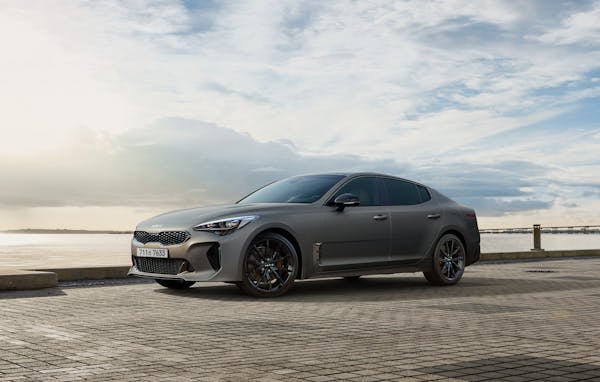
When shopping for a new or used vehicle, understanding car specifications is crucial to making an informed decision. These specifications not only reveal a car’s performance capabilities but also its fuel economy, comfort, and safety features. Whether you’re a first-time buyer or a seasoned driver looking for an upgrade, knowing how to read and interpret car specs can help you choose the vehicle that best fits your lifestyle and budget.
In this guide, we break down the most important car specifications, explain what they mean, and show how they impact your driving experience.
What Are Car Specifications?
Car specifications are a detailed list of features and measurements that describe how a vehicle performs, how much space it offers, and what technology it includes. Manufacturers provide these specs so buyers can compare models easily.
Specifications generally fall into categories like:
-
Engine and Performance
-
Fuel Efficiency
-
Dimensions and Weight
-
Interior Features
-
Safety Equipment
-
Technology and Infotainment
Let’s explore each category in more detail.
1. Engine and Performance Specs
One of the most critical areas in any car spec sheet is the engine and performance section.
🔧 Engine Type
This tells you what powers the car:
-
Petrol (gasoline)
-
Diesel
-
Hybrid
-
Electric (EV)
🧮 Engine Displacement (cc or liters)
The engine size is typically shown in cubic centimeters (cc) or liters (L). More displacement usually means more power but may also reduce fuel efficiency.
🚗 Horsepower (hp)
This indicates the engine’s power output. More horsepower means faster acceleration and higher performance.
🌀 Torque (Nm or lb-ft)
Torque measures the engine’s rotational force—important for towing and climbing hills.
🏎️ 0–100 km/h (0–60 mph)
A performance benchmark showing how fast the car accelerates. Sports cars usually achieve this in under 6 seconds.
2. Transmission and Drivetrain
Car specs will tell you what kind of transmission and drivetrain the car uses.
-
Transmission Types:
-
Manual
-
Automatic (Torque Converter, CVT, Dual-Clutch)
-
Semi-automatic
-
-
Drivetrain Layout:
-
FWD (Front-Wheel Drive)
-
RWD (Rear-Wheel Drive)
-
AWD (All-Wheel Drive)
-
4WD (Four-Wheel Drive)
-
Each system offers different benefits depending on driving conditions.
3. Fuel Efficiency
Fuel economy is one of the top concerns for most car buyers.
-
Mileage (km/l or mpg): Indicates how far the car can travel per liter (or gallon) of fuel.
-
Fuel Tank Capacity: A larger tank means longer distances between refueling.
-
CO2 Emissions: Important for environmental-conscious drivers and may affect taxation in some countries.
Electric and hybrid models will include battery range (in kilometers or miles) instead of fuel mileage.
4. Dimensions and Weight
Understanding a car’s size helps determine how it fits into your daily life.
-
Length, Width, and Height: Affects parking, maneuverability, and interior space.
-
Wheelbase: The distance between the front and rear wheels—longer wheelbases usually mean more cabin space.
-
Ground Clearance: Important for off-road driving or rough terrain.
-
Curb Weight: The car’s weight without passengers—heavier cars may use more fuel but often feel more stable.
5. Interior and Seating Capacity
-
Number of Seats: Typically 2, 4, 5, 7, or even 8 in SUVs and MPVs.
-
Upholstery Type: Fabric, leather, or synthetic materials.
-
Infotainment System: Screen size, touchscreen capabilities, Apple CarPlay, Android Auto, etc.
-
Climate Control: Single-zone or dual-zone AC systems.
-
Cargo Space: Measured in liters or cubic feet—important for families or travelers.
6. Safety Features
Safety is a top priority, and car specifications provide detailed info on this.
-
Airbags: Number and placement (front, side, curtain)
-
ABS (Anti-lock Braking System)
-
ESC (Electronic Stability Control)
-
ADAS Features: Advanced systems like lane-keeping assist, adaptive cruise control, and automatic emergency braking
-
Crash Test Ratings: From organizations like Euro NCAP, IIHS, or NHTSA
7. Technology and Convenience
Modern cars come equipped with advanced tech that enhances comfort and usability.
-
Keyless Entry and Push Start
-
Navigation System
-
Wireless Charging
-
Digital Instrument Cluster
-
Drive Modes (Eco, Sport, Normal)
How to Compare Car Specifications
When looking at multiple vehicles, pay close attention to:
-
Your Needs: A city driver may prioritize fuel efficiency over horsepower.
-
Resale Value: Some specs retain value better than others.
-
Maintenance Costs: Turbocharged engines or performance parts may be more expensive to maintain.
-
Warranty Coverage: A longer warranty on drivetrain or battery (for EVs) is a plus.
-
Drive Tests: Specs are helpful, but a test drive confirms how the car feels on the road.
Where to Find Accurate Car Specifications
-
Manufacturer Websites
-
Car Review Platforms like CarWale, Edmunds, CarDekho, Autocar
-
Owner’s Manual
-
Vehicle Listings on Portals like OLX, Dubizzle, or Cars.com
-
YouTube Reviews and automotive blogs
Final Thoughts
Understanding car specifications is essential to making the right vehicle choice. From engine performance and fuel economy to safety and infotainment features, these details shape the driving experience. Use this knowledge to compare models intelligently, ask the right questions at the dealership, and ultimately drive away in a car that truly fits your lifestyle.





